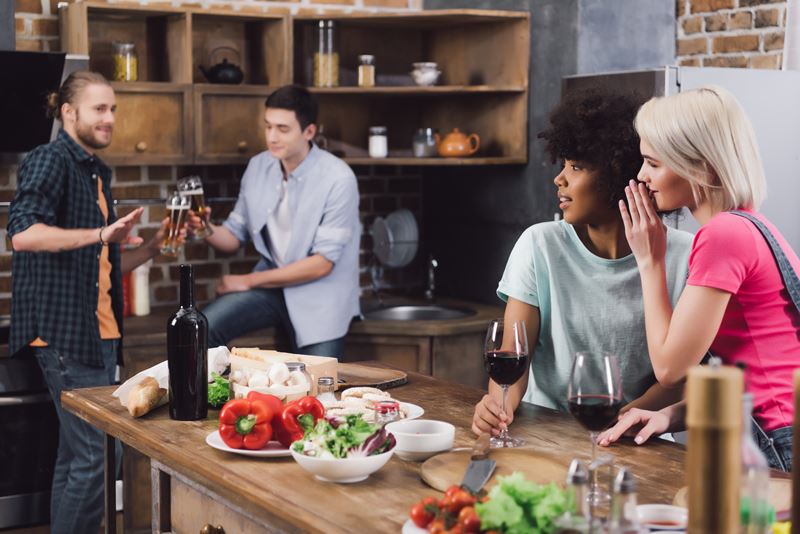Who benefits from the trend towards moderation?
The no-alcohol boom shakes up the drinks industry
2024-03-22

In the evolving landscape of consumer preferences, the trend towards moderation in alcohol consumption has opened up a unique and fascinating frontier in the beverage industry. This shift isn't just about reducing alcohol intake; it's about diversifying the palette of choices available to consumers, creating a vibrant tapestry of options that cater to a range of desires and needs. The no- and low-alcohol sector, once a niche market, has burgeoned into a significant player, offering both challenges and opportunities to traditional and emerging beverage companies alike.
A recent study by the IWSR delves into the dynamics of this shift, revealing intriguing patterns in consumer behavior and market responses. At the heart of this trend is a growing segment of consumers who are pivoting towards no-alcohol options, not at the expense of traditional alcoholic beverages but, interestingly, substituting other non-alcoholic drinks like soft drinks, water, tea, or coffee. This nuanced migration underscores a critical insight: the primary appeal of no- and low-alcohol beverages lies in their ability to offer a sophisticated, adult drinking experience without the alcohol content, rather than merely serving as a direct replacement for their alcoholic counterparts.
The implications of this shift are multifaceted. For one, it limits the degree of cannibalization between traditional alcoholic beverages and their no/low-alcohol counterparts. Instead of eroding the market share of full-strength alcohol, no- and low-alcohol options are carving out their own niche, attracting consumers from outside the traditional alcohol spectrum. This phenomenon suggests incremental growth opportunities for brands, as they can now reach a broader audience, including those who might have previously opted for a glass of water or a soft drink.
Brand owners, recognizing this trend, have been agile in their response. There's a growing enthusiasm among alcohol companies to venture into the no-alcohol space as a strategic move to capture growth. By introducing no-alcohol versions of popular brands or acquiring pure-play no-alcohol brands, these companies are not just retaining customers within their portfolio but are also expanding their reach. The surge in no-alcohol innovations, with a tripling of new products hitting the market since 2019, is a testament to the industry's commitment to this emergent sector.
The consumer base for low-alcohol products exhibits a slightly different pattern, with a significant portion of them replacing full-strength options. This reflects a nuanced approach to moderation, where consumers seek to lower their alcohol consumption without forgoing it entirely. It's a trend that particularly impacts the beer and cider segments, as well as spirits in certain markets, indicating a broad-based appeal across different alcohol categories.
An untapped opportunity lies with non-consumers of no/low alcohol who are either moderating their alcohol intake or abstain altogether. This demographic represents a potential growth area for brands, suggesting that the appeal of no- and low-alcohol beverages could extend beyond current consumers to those who are looking for alternatives to traditional alcoholic drinks.
Furthermore, the rise of functional beverages, or 'alcohol adjacents', with health-enhancing ingredients like CBD, adaptogens, or nootropics, is capturing the interest of younger consumers. This segment, driven by a desire for beverages that offer more than just refreshment, poses a potential challenge to traditional alcohol consumption patterns, especially among Millennials and Gen Z consumers.
In conclusion, the moderation trend is reshaping the beverage alcohol industry in profound ways, presenting a mosaic of opportunities for innovation, growth, and consumer engagement. As brands navigate this evolving landscape, the key to success lies in understanding the diverse needs and preferences of consumers, offering choices that resonate with their lifestyles, and embracing the potential of no- and low-alcohol beverages as a complementary, rather than competitive, addition to the beverage spectrum.
Founded in 2007, Vinetur® is a registered trademark of VGSC S.L. with a long history in the wine industry.
VGSC, S.L. with VAT number B70255591 is a spanish company legally registered in the Commercial Register of the city of Santiago de Compostela, with registration number: Bulletin 181, Reference 356049 in Volume 13, Page 107, Section 6, Sheet 45028, Entry 2.
Email: [email protected]
Headquarters and offices located in Vilagarcia de Arousa, Spain.